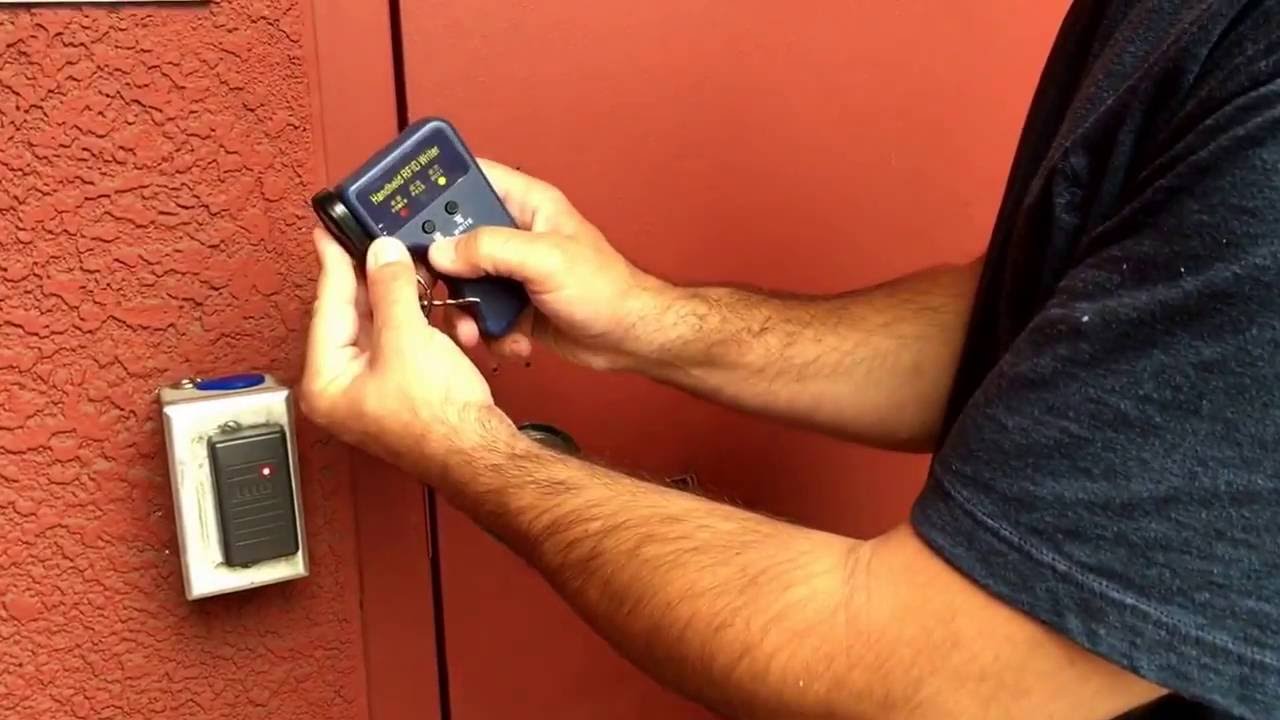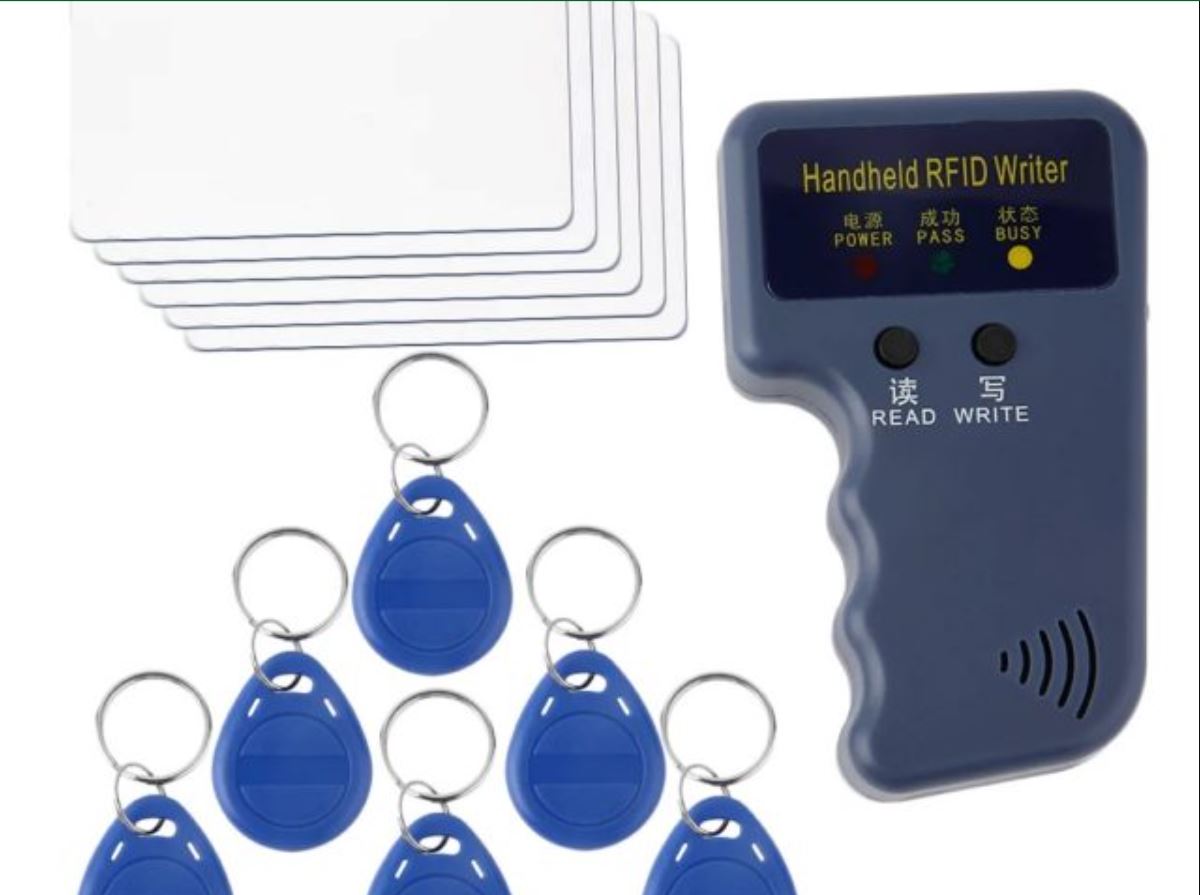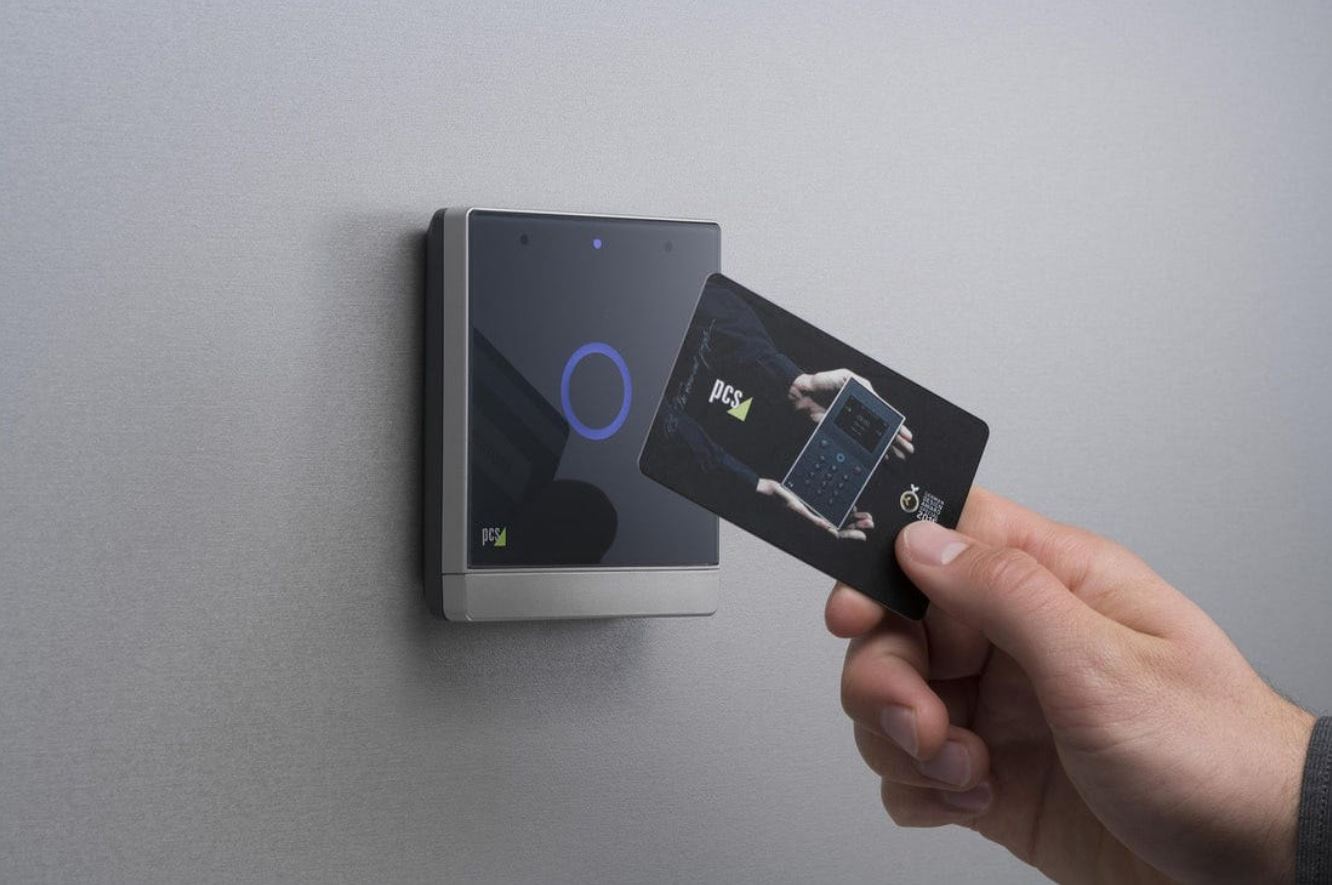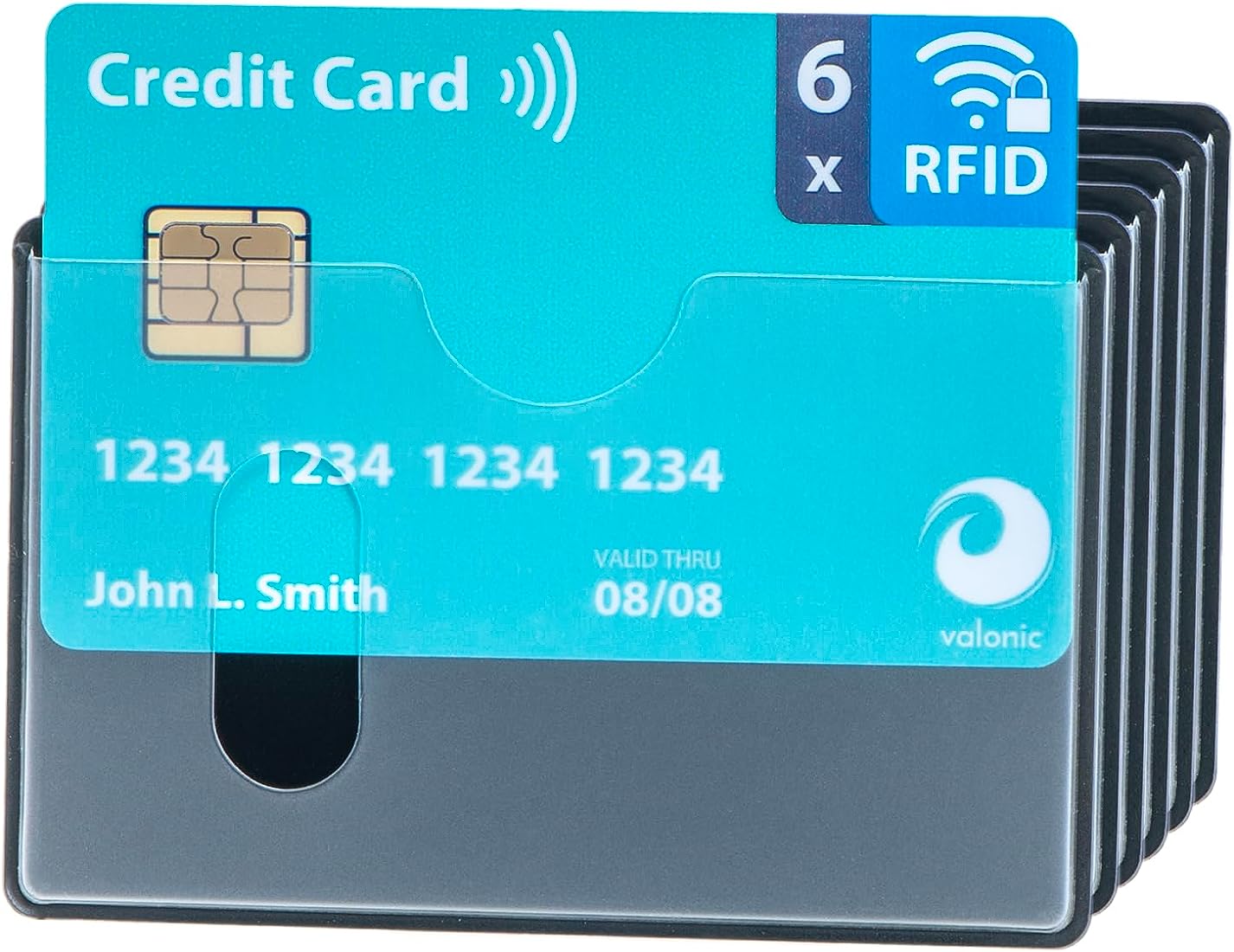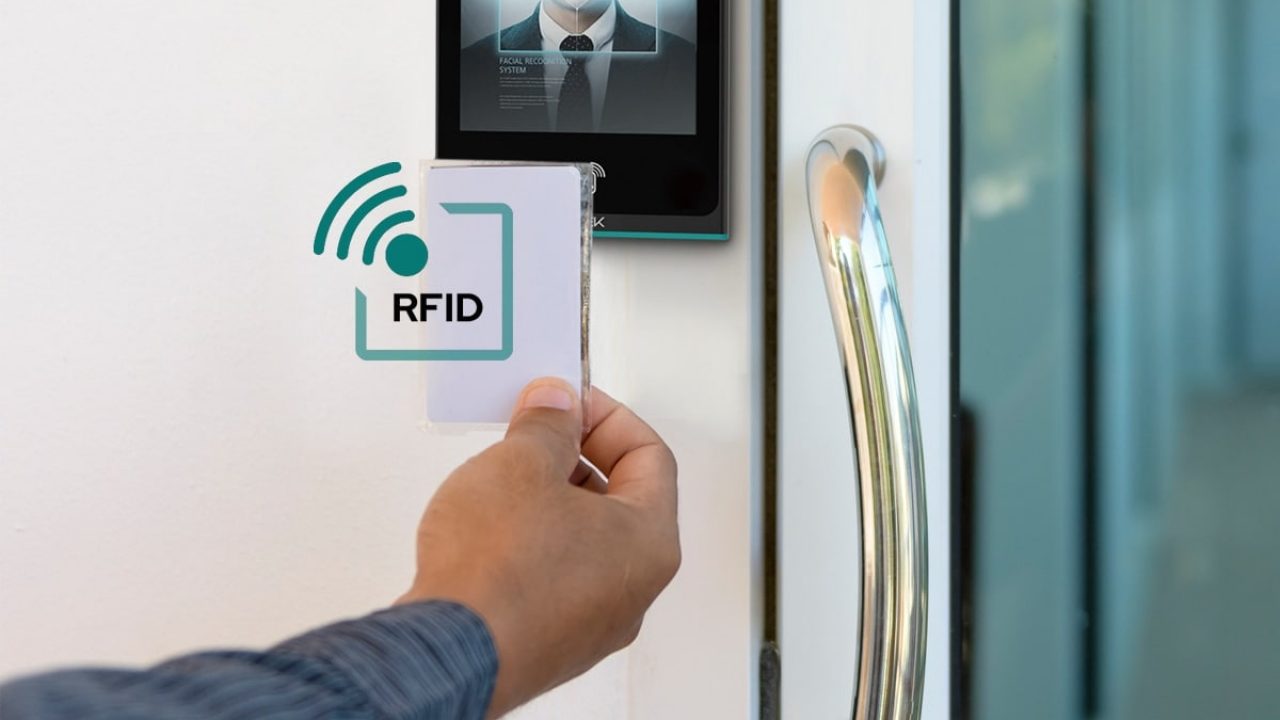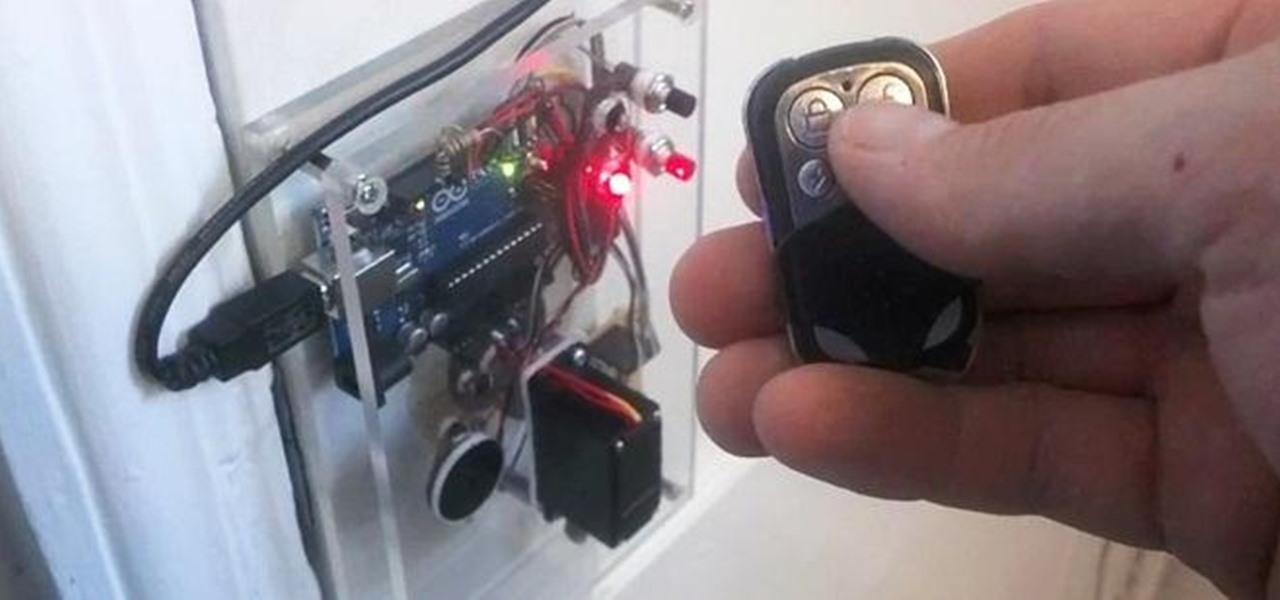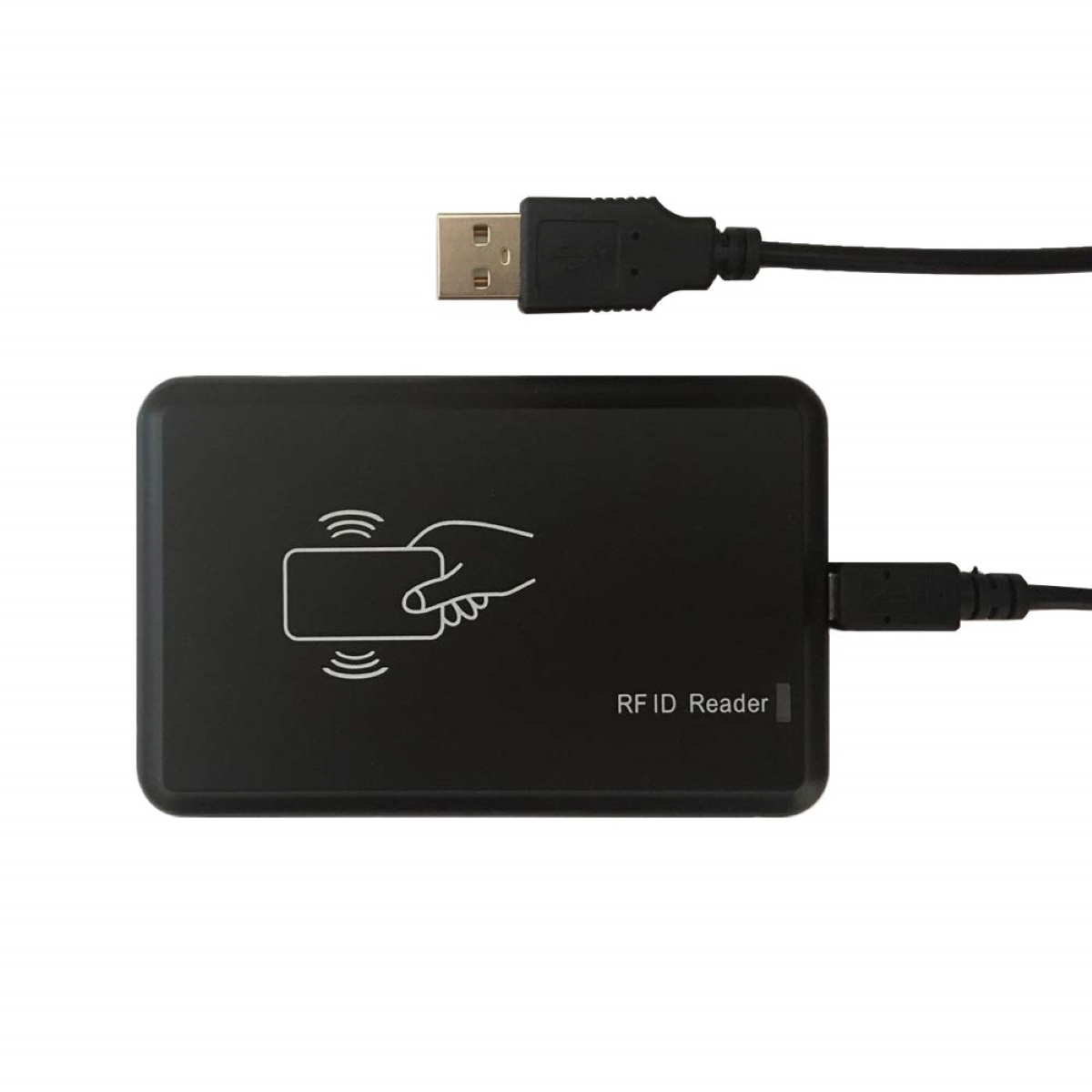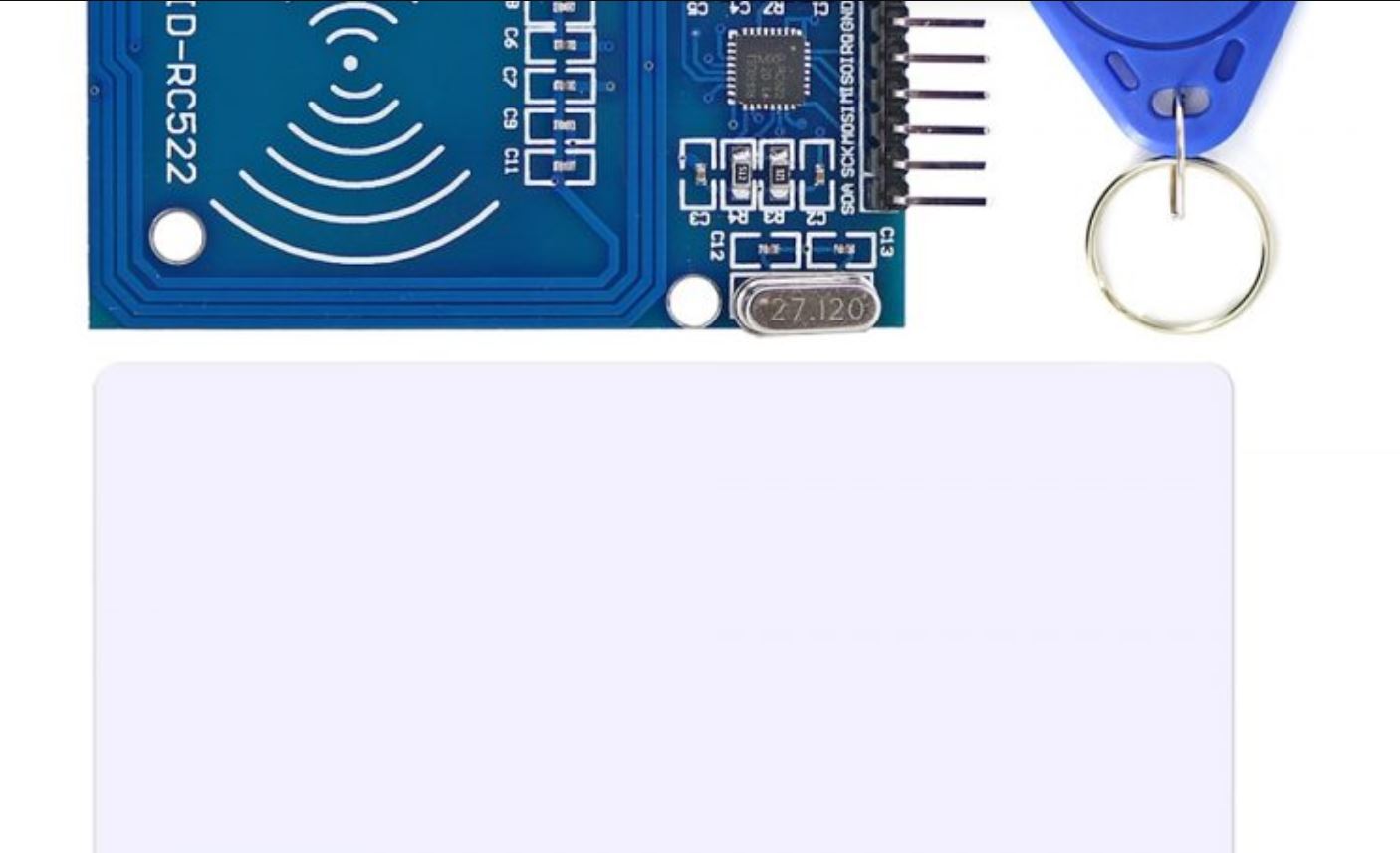Introduction
RFID fobs, or radio frequency identification fobs, play an essential role in various access control systems. These small electronic devices transmit a unique code that allows users to gain entry to secured areas or activate specific functions. While purchasing additional RFID fobs from the manufacturer can be costly, there is a way to copy existing fobs and save money. In this article, we will explore the process of cloning an RFID fob, enabling you to create a duplicate fob without the need for expensive equipment or technical expertise.
Copying an RFID fob can be a convenient solution in various situations. Perhaps you have lost your original fob, need an extra fob for family members, or simply want a backup in case the original gets damaged. Whatever the reason, learning how to copy an RFID fob can be a useful skill to have.
Before we delve into the step-by-step process of cloning an RFID fob, it’s important to have a basic understanding of how RFID technology works. This will help you grasp the underlying principles and better navigate the cloning process. Additionally, we will discuss the materials you will need, such as an RFID cloner, and how to determine the frequency and format of the fob you wish to copy.
By following the instructions provided in this article, you will be able to successfully clone an RFID fob and enjoy the benefits of having an additional or replacement fob. So, let’s dive into the world of RFID technology and discover how you can become your own fob duplicator.
Understanding RFID Technology
To effectively clone an RFID fob, it’s essential to have a basic grasp of how RFID technology operates. RFID, short for radio frequency identification, uses electromagnetic fields to wirelessly transmit data. An RFID system typically consists of three components: the RFID tag or fob, the reader or scanner, and the controller or database.
The RFID tag or fob is a small electronic device that contains a unique identifier, which can be transmitted to the reader when in close proximity. This identifier is often referred to as the “RFID code” or “UID” (Unique Identification). The tag may be passive, meaning it relies on the energy from the reader to transmit the code, or active, where it has its own power source.
The reader is responsible for sending out electromagnetic waves and capturing the tag’s response. It emits a radio frequency signal that powers up and communicates with the tag. When the reader detects a nearby tag, it retrieves the unique identifier and sends it to the controller or database for further processing.
The controller or database serves as the central hub of the RFID system, linking the reader’s data with the desired action. It can be a computer program or hardware device that stores and manages the information associated with each RFID tag. Depending on the application, the controller may grant access, record attendance, or trigger specific actions based on the received RFID code.
It’s worth noting that RFID technology operates on various frequencies, commonly categorized as low-frequency (LF), high-frequency (HF), and ultra-high frequency (UHF). Each frequency range has its advantages and is used in different applications. Understanding the frequency of the fob you want to clone will be crucial in selecting the appropriate cloning device.
By comprehending the fundamentals of RFID technology, you will gain a better understanding of how cloning an RFID fob works. In the following sections, we will explore the step-by-step process of cloning an RFID fob and provide useful tips and troubleshooting guidance for a successful cloning experience. So, let’s continue our journey into the world of RFID fob cloning.
Gathering the Necessary Materials
Before you embark on the journey of cloning an RFID fob, it’s important to gather all the required materials. Having the right tools and equipment on hand will ensure a smooth and successful cloning process. Here are the essential materials you will need:
- RFID Cloner: The backbone of the cloning process, an RFID cloner is a device specifically designed to copy RFID fobs. It allows you to read and write data to the fob, replicating its unique identifier onto a blank RFID tag. There are various types and models of RFID cloners available in the market, so make sure to choose one that is compatible with the frequency and format of your target fob.
- Blank RFID Tags: These are the blank, writable RFID tags onto which you will clone the data from the original fob. Ensure that the blank tags are compatible with the RFID cloner you are using.
- Computer: You will need a computer with USB ports to connect the RFID cloner and potentially install any necessary software or drivers.
- RFID Signal Analyzer: While not mandatory, an RFID signal analyzer can be a helpful tool for determining the frequency of the original fob. It allows you to detect and analyze the radio signals emitted by the fob, giving you valuable insights into the operating frequency.
- User Manual and Documentation: Depending on the specific model of your RFID cloner, it’s essential to have the user manual and any accompanying documentation readily available. These resources will guide you through the setup and operation of the cloner, ensuring you make the most out of its capabilities.
By gathering these necessary materials before beginning the cloning process, you will be well-prepared and equipped to successfully clone your desired RFID fob. Ensure that you have everything in place and ready to go. Next, we will explore how to find the frequency of the fob you want to clone, a crucial step in the cloning process.
Finding the RFID Frequency
Before you can effectively clone an RFID fob, it’s important to determine the frequency at which it operates. The frequency of an RFID fob refers to the radio waves used to transmit and receive data between the tag and the reader. Different RFID systems operate at different frequencies, and knowing the specific frequency of the fob you want to clone is essential for selecting the right cloning device. Here are some methods to help you find the frequency of an RFID fob:
- Manufacturer’s Documentation: Start by checking the manufacturer’s documentation or website. They often provide information about the frequency range used by their RFID fobs. Look for specifications or technical details related to the product.
- Visual Inspection: Examine the RFID fob closely. Some manufacturers include labels or markings on the fob that indicate the frequency or technology used. Look for letters such as “LF” for low-frequency, “HF” for high-frequency, or “UHF” for ultra-high frequency.
- RFID Signal Analyzer: If you have access to an RFID signal analyzer, you can use it to detect and analyze the radio signals emitted by the RFID fob. The signal analyzer can provide valuable insights into the frequency and other properties of the fob’s signal. Follow the instructions provided with the analyzer to perform the analysis.
- Online Forums and Communities: Engage with RFID enthusiasts and professionals in online forums and communities. These platforms often have discussions about specific RFID fob models and frequencies. Seek advice or ask questions related to your specific fob, and knowledgeable individuals may provide insights or direct you to relevant resources.
By using these methods, you can determine the frequency of the RFID fob you want to clone. Remember to record this information accurately, as it will be crucial for selecting the appropriate cloning device in the next steps. With the frequency identified, we are one step closer to successfully cloning the RFID fob. Next, we will explore how to identify the fob format, which is essential for properly configuring the cloning device.
Identifying the Fob Format
Once you have determined the frequency of the RFID fob you want to clone, the next step is to identify the fob format. The fob format refers to the specific data structure and encoding used by the fob to transmit its unique identifier. Understanding the fob format is essential for configuring the cloning device correctly. Here are some methods to help you identify the fob format:
- Manufacturer’s Documentation: Check the manufacturer’s documentation or website for any information regarding the fob format. The documentation may provide details about the data structure, encoding format, and any specific protocols used.
- Testing and Observation: If you have access to the original RFID reader that is used with the fob, place the fob near the reader and observe the data displayed or recorded. Look for any patterns, numbers, or special characters that may indicate the fob format. Sometimes, the format may be displayed directly on the reader’s screen.
- Online Resources and Communities: Search online for information about the specific RFID fob model or brand. Online forums, communities, or even official support channels may contain discussions or documentation related to the fob format. Engage with other users or experts who may have encountered similar fobs.
- Experimentation: If you have access to a spare RFID cloner or reader, you can experiment by cloning or reading the original RFID fob and analyzing the data. By examining the captured data and comparing it to known fob formats, you may be able to identify the format used.
Identifying the fob format may require some research and experimentation, but it is an important step in the cloning process. Once you have gathered information about the fob format, ensure that you record it accurately, as it will be crucial for configuring the cloning device properly. With the fob format identified, we are now ready to prepare the RFID cloner for the cloning process.
Preparing the RFID Cloner
Before proceeding with cloning an RFID fob, it is necessary to prepare the RFID cloner for the cloning process. Properly configuring the cloner ensures that it is ready to read and write data to the blank RFID tags. Here are the steps to prepare the RFID cloner:
- Read the User Manual: Familiarize yourself with the user manual and documentation provided with the RFID cloner. Each cloner may have different features, settings, and configuration options. Understanding the specific instructions for your cloner model is essential to ensure successful cloning.
- Power on the Cloner: Start by powering on the RFID cloner. Most cloners have a power button or switch that you can use to turn it on.
- Connect to a Computer: Depending on your cloner model, it may require a connection to a computer for configuration purposes. Connect the cloner to your computer using the provided USB cable or any other appropriate interface. Some cloners may require specific software or drivers to be installed on your computer for proper communication. Follow the instructions provided with the cloner to install any necessary software or drivers.
- Set the Cloner to the Correct Frequency: Configure the cloner to match the frequency of the RFID fob you want to clone. Most cloners have settings or buttons that allow you to select the desired frequency. Refer to the user manual to properly set the frequency.
- Configure the Fob Format: Set the cloner to the identified fob format. Depending on the cloner model, this may involve selecting a specific encoding format or matching the data structure of the fob. Follow the instructions provided with the cloner to properly configure the fob format.
- Test the Connectivity: Ensure that the cloner is properly connected to the computer and that it can communicate with the cloning software or drivers. Test the connectivity by reading a sample RFID tag or reading the original fob (if possible). Verify that the data is captured correctly and that the cloner can communicate with the tags.
By following these steps, you will be able to prepare the RFID cloner for the cloning process. Take your time to carefully configure the cloner based on the frequency and format of the fob you want to clone. Once the cloner is ready, we can move on to the exciting part of actually cloning the RFID fob.
Copying the RFID Fob
Now that you have successfully prepared the RFID cloner, it is time to proceed with the actual process of copying the RFID fob. Follow these steps to clone the RFID fob:
- Place the Original and Blank RFID Tags: Put the original RFID fob and a blank RFID tag in close proximity to the cloner. Ensure that the cloner’s antenna is aligned with both the original fob and the blank tag.
- Read the Original Fob: Use the cloner to read the data from the original fob. Depending on your cloner model, you may need to press a button or activate a specific function to initiate the reading process. The cloner will capture the unique identifier and other relevant data from the original fob.
- Write Data to the Blank Tag: With the data from the original fob captured, instruct the cloner to write the data onto the blank RFID tag. Follow the cloner’s instructions carefully, ensuring that the data is transferred accurately to the blank tag. This step effectively clones the RFID fob onto the blank tag.
- Verify the Cloned Tag: Once the writing process is complete, use the cloner to verify that the data has been successfully written onto the blank tag. The cloner will read the data from the cloned tag and compare it to the original fob’s data. Confirm that the data matches to ensure a successful cloning process.
- Repeat the Process: If you wish to create multiple copies of the RFID fob, repeat the steps above for each blank tag. Ensure that each blank tag is placed correctly and that the cloner completes the reading and writing process accurately.
It is important to note that the cloning process may vary slightly depending on the specific model and features of your RFID cloner. Refer to the user manual and documentation provided with your cloner for any additional instructions or specific details related to your cloner model.
By following these steps, you will be able to successfully copy the RFID fob onto the blank tags using the RFID cloner. Take your time and ensure that each step is executed accurately to achieve optimal results. After completing the cloning process, it is vital to test the functionality of the cloned RFID fob to ensure its effectiveness. We will cover this testing process in the next section.
Testing the Cloned RFID Fob
After successfully cloning the RFID fob onto the blank tags, it is crucial to test the functionality of the cloned fob. Testing ensures that the cloned fob can effectively mimic the original fob’s functionality and grant access or perform desired actions. Here are the steps to test the cloned RFID fob:
- Identify a Compatible RFID Reader: Locate an RFID reader or access control system that is compatible with the frequency and format of the cloned fob. It could be the same reader used for the original fob or a reader that supports the same technology.
- Place the Cloned Fob near the Reader: Position the cloned fob in close proximity to the reader, as you would with the original fob. Ensure that the antenna of the cloned fob is aligned with the reader’s antenna.
- Test Fob Recognition: Test if the reader recognizes and authenticates the cloned fob. Ideally, the reader should grant access or perform the desired function associated with the original fob. If the cloned fob is successfully recognized, it indicates a successful cloning process.
- Verify Functionality: Verify that the cloned fob can perform all the necessary functions associated with the original fob. This may include opening doors, activating equipment, or any other actions the original fob was programmed to perform.
- Repeat Testing: If you have cloned multiple fobs, repeat the testing process for each cloned fob to ensure their individual functionality.
Performing comprehensive testing will give you confidence in the effectiveness of the cloned RFID fob. It is crucial to verify that the cloned fob behaves similarly to the original fob in terms of granting access or performing desired actions. If the cloned fob fails to function properly, you may need to troubleshoot or repeat the cloning process.
Remember that the testing process may vary depending on your specific access control system and the actions associated with the fob. Refer to the user manual or documentation provided with your access control system for any additional instructions or specific details related to testing RFID fobs.
By thoroughly testing the cloned RFID fob, you can ensure its functionality and reliability, providing peace of mind knowing that you have successfully created a duplicate of your original fob. However, in case you encounter any issues during the testing process, the next section will provide guidance and troubleshooting tips to help resolve common problems.
Troubleshooting Common Issues
While cloning RFID fobs can be a relatively straightforward process, there may be occasions when you encounter common issues or challenges. In this section, we will explore some common problems that may arise during the cloning process and provide troubleshooting tips to help resolve them:
- Cloner and Fob Incompatibility: Ensure that the RFID cloner and the original fob are compatible in terms of frequency and format. Incompatibility can result in the cloner’s inability to read or write data to the fob. Check the documentation or consult with the manufacturer to verify compatibility and consider using a different cloner if needed.
- Placement and Alignment: Verify that the original fob and blank tag are properly placed and aligned with the cloner’s antenna. Poor placement or misalignment can lead to unsuccessful cloning or data transfer. Adjust their positions as necessary and ensure a good connection.
- Insufficient Power: Check the power source of both the cloner and the original fob. Ensure that the cloner has sufficient power to read and write data. If the original fob has a low battery, it may not transmit data effectively, resulting in cloning difficulties.
- Configuration and Settings: Double-check the configuration and settings of the cloner. Make sure the cloner is set to the correct frequency and fob format. Any incorrect settings can prevent successful reading and writing of data. Refer to the user manual or contact the manufacturer for guidance in configuring the cloner accurately.
- Interference or Signal Weakness: In some cases, environmental factors such as interference or weak signals can disrupt the cloning process. Ensure that you are working in an area with minimal interference and try different locations if needed. Additionally, check for any physical obstructions that may weaken the signal between the cloner and the original fob.
- Software and Firmware Updates: Keep the cloner’s software and firmware up to date. Manufacturers often release updates to address bugs or improve compatibility. Check the manufacturer’s website or contact their support to access the latest updates for your cloner. Updating the software or firmware may resolve any known issues or bugs.
By addressing these common issues and following the troubleshooting tips, you can overcome challenges and increase the chances of a successful cloning process. If problems persist or additional complexities arise, consider seeking assistance from the manufacturer’s support team or consulting with experienced professionals.
Remember that patience and persistence are key when troubleshooting. Each cloning situation may have unique factors, so take the time to analyze and understand the specific issue before attempting a resolution. With perseverance and problem-solving, you can overcome obstacles and achieve a successful cloning outcome.
Conclusion
Cloning an RFID fob can be a cost-effective and convenient solution, allowing you to create duplicates or replacements without relying on expensive manufacturer services. By understanding the fundamentals of RFID technology, gathering the necessary materials, and following the step-by-step process, you can successfully clone an RFID fob.
Throughout this article, we have explored the importance of understanding RFID technology, identifying the frequency and format of the fob, preparing the RFID cloner, copying the fob, testing its functionality, and troubleshooting common issues that may arise. It’s crucial to follow each step carefully and refer to the user manuals, manufacturer documentation, and online resources for specific instructions and guidance.
Remember, cloning an RFID fob should only be done for legal and authorized purposes, such as creating backups, additional fobs, or replacements. Respect the rights and regulations associated with the use of fobs and access control systems.
As technology continues to advance, it’s important to stay up-to-date with the latest developments in RFID technology and cloning methods. Manufacturers may introduce new security features or encryption standards that impact the cloning process. Stay informed and adapt your techniques as necessary to ensure successful outcomes.
By mastering the art of cloning RFID fobs, you can save time and money while enjoying the convenience of having duplicate or replacement fobs at your disposal. Remember to always comply with legal regulations and ethical considerations when using cloned fobs.
Now that you’re equipped with the knowledge and understanding needed to clone RFID fobs, put it into practice responsibly and explore the possibilities it offers. Enhance your access control system, increase convenience, and enjoy the benefits of having cloned RFID fobs at your fingertips.







